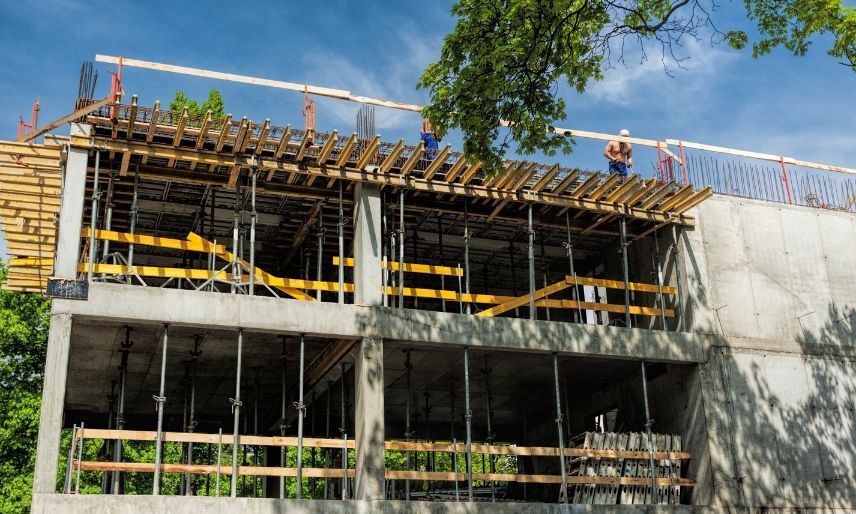Arizona’s transportation landscape is at a pivotal moment. With a projected need for over $230 billion in infrastructure investments by 2050, the state’s Department of Transportation (ADOT) faces unprecedented demands. These investments span highways, airports, and safety initiatives, all requiring careful planning and execution. A critical but often overlooked factor in this process is bonding timelines. Understanding why bonding timelines matter more in Arizona’s context can shed light on the challenges and opportunities shaping the state’s transportation future. For a detailed perspective on Arizona's long-term infrastructure plans, see the 2050 Long Range Transportation Plan.
The Scale of Arizona’s Transportation Investment Needs
Arizona’s transportation infrastructure is under significant pressure due to rapid population growth and economic expansion. The Arizona Department of Transportation estimates that the state will require $231.4 billion in investments over the next 25 years to maintain and expand its transportation network. This staggering figure reflects the need for new roads, pavement preservation, highway safety improvements, and airport development.
One of the driving factors behind this demand is the state's extensive network of 67 publicly owned airports, which contributed $59.4 billion to Arizona’s economy in 2019 alone. This economic impact highlights the importance of maintaining and upgrading aviation facilities as part of the broader transportation strategy. Furthermore, the state's unique geographical features, including vast deserts and mountainous terrains, necessitate specialized infrastructure solutions that can withstand the elements while facilitating efficient travel and trade.
To address immediate infrastructure needs, ADOT has proposed a five-year $12.7 billion construction program focused on transportation facilities. This program emphasizes pavement preservation and highway safety, aiming to extend the lifespan of existing assets while improving traveler safety. The magnitude of these projects means that securing timely and reliable funding through bonding is essential to avoid costly delays or disruptions. Additionally, the program seeks to incorporate innovative technologies such as smart traffic management systems and electric vehicle charging stations, which are becoming increasingly vital as the state moves towards a more sustainable and efficient transportation ecosystem.
Moreover, the growing demand for public transit options cannot be overlooked. With urban areas like Phoenix and Tucson experiencing significant population surges, enhancing public transportation systems is crucial for reducing traffic congestion and promoting environmentally friendly commuting alternatives. Investments in light rail, bus rapid transit, and multimodal transit hubs are being considered to create a more integrated transportation network that serves the diverse needs of Arizona's residents. This holistic approach not only addresses current infrastructure demands but also positions the state for future growth, ensuring that all Arizonans have access to reliable and efficient transportation options.
Why Bonding Timelines Are Crucial in Arizona
Bonding timelines refer to the schedule and deadlines associated with issuing bonds that finance large public infrastructure projects. In Arizona, these timelines are particularly critical due to several intertwined factors.
Rapid Cost Increases and Material Price Volatility
The National Highway Construction Cost Index reveals a 63.7% increase in material costs from fiscal year 2021 to 2023. Such volatility directly impacts project budgets and timelines. When bonding is delayed, rising material costs can inflate project expenses beyond initial estimates, forcing agencies to either scale back plans or seek additional funding.
Arizona’s DOT must therefore synchronize bonding issuance with project schedules to lock in financing before costs escalate further. Delays in bonding can lead to missed opportunities for cost savings and jeopardize the completion of critical infrastructure on time. Furthermore, the unpredictability of material costs can lead to a ripple effect, where projects that were initially budgeted for a certain amount may require significant adjustments, leading to potential delays in project initiation and completion.
Complexity of Multi-Agency Collaboration
Arizona’s transportation projects often involve collaboration among multiple agencies and stakeholders. Recent developments such as the launch of the Arizona Transportation Institute—a tri-university consortium focusing on transportation research—illustrate the increasing complexity of coordinating efforts across different entities. According to David W. Hahn, Dean of the University of Arizona College of Engineering, “This collaborative approach is certain to drive economic growth and scientific progress.”
While collaboration enhances innovation, it also requires precise alignment of funding schedules. Bonding timelines must accommodate the coordination of federal, state, and local funding sources to ensure projects proceed without financial interruptions. The intricacies of these partnerships can lead to challenges in communication and decision-making, which can further complicate the bonding process. For instance, if one agency experiences a delay in its funding approval, it can stall the entire project, affecting not only timelines but also the overall effectiveness of the infrastructure being developed. For more on the Arizona Transportation Institute, visit University of Arizona News.
Impact of Bonding on Project Delivery and Economic Growth
Timely bonding is not just a financial technicality; it directly influences how quickly and efficiently projects reach completion. When bonds are issued on schedule, contractors can mobilize resources, order materials, and plan labor effectively. Conversely, delays in bonding can stall projects, leading to increased costs and missed economic opportunities. The ripple effect of these delays can be felt throughout the community, impacting not only the contractors and subcontractors involved but also local suppliers and service providers who rely on the steady flow of work. This interconnectedness highlights the importance of streamlined bonding processes in maintaining a robust economic environment.
Arizona’s transportation projects are vital drivers of economic growth. The aviation sector alone, supported by ADOT’s airport development programs, generated nearly $60 billion in economic activity as of 2019. Maintaining momentum in these projects depends on securing and deploying funds promptly. In addition to aviation, investments in road infrastructure and public transit systems create jobs and enhance accessibility for residents and businesses alike. As these projects progress, they not only improve connectivity but also attract tourism and stimulate local economies, showcasing the multifaceted benefits of effective bonding practices.
Moreover, ADOT’s ongoing efforts to update Disadvantaged Business Enterprise (DBE) participation goals through the 2024-2026 DBE Disparity Study emphasize the importance of inclusive contracting. Timely bonding ensures that these goals can be met by providing a clear financial framework for contractors, including smaller and disadvantaged businesses, to participate in federally funded projects. This inclusivity fosters a diverse economic landscape where various businesses can thrive, ultimately leading to a more equitable distribution of resources and opportunities. Learn more about the DBE study at ADOT Business Engagement.
Bonding and Highway Safety Initiatives
Safety remains a top priority in Arizona’s transportation agenda. The five-year $12.7 billion construction program includes highway safety improvements designed to reduce accidents and fatalities. Effective bonding timelines ensure these safety projects can be launched without delay, protecting lives and reducing long-term healthcare and emergency response costs. By prioritizing safety through timely bonding, Arizona not only addresses immediate concerns but also invests in the long-term well-being of its residents, creating a safer environment for all road users.
Delays in bonding could postpone critical upgrades such as guardrails, signage, and road surface improvements, which are essential in a state with diverse terrain and weather conditions. This makes the synchronization of bonding with project needs a matter of public safety as much as fiscal responsibility. Furthermore, the integration of advanced technology in highway safety initiatives, such as smart traffic signals and real-time monitoring systems, underscores the need for timely funding. These innovations can significantly enhance safety outcomes, but their successful implementation hinges on the availability of resources secured through efficient bonding processes. As Arizona continues to evolve its transportation infrastructure, the role of bonding in facilitating these advancements cannot be overstated.
Challenges and Strategies for Managing Bonding Timelines
Managing bonding timelines in Arizona’s transportation projects involves navigating several challenges. These include fluctuating market conditions, regulatory compliance, and political factors that influence funding decisions.
Market Conditions and Inflation
The sharp increase in construction material costs underscores the need for agile financial planning. ADOT and other agencies must anticipate market trends and secure bonds early enough to avoid the worst of inflationary pressures. This requires close monitoring of economic indicators and proactive communication with investors and contractors. Additionally, the volatility in supply chains, exacerbated by global events, has led to unpredictable delays in project timelines. As a result, agencies are increasingly adopting advanced forecasting tools and analytics to better predict future costs and timelines, ensuring that they remain ahead of the curve.
Regulatory and Compliance Considerations
Federal and state regulations govern how bonds are issued and spent. Ensuring compliance with these rules can add complexity to bonding timelines, especially when projects involve multiple funding sources. The integration of DBE participation goals further complicates the process but is essential for equitable contracting. Moreover, the evolving landscape of environmental regulations necessitates that agencies stay informed about new compliance requirements, which can influence project scope and timelines. Training programs and workshops are being implemented to keep project managers updated on regulatory changes, enabling them to navigate these complexities more effectively.
Political and Budgetary Factors
Bonding decisions often depend on state budget cycles and legislative approval. Political shifts can introduce uncertainty, affecting when and how bonds are authorized. Maintaining transparency and building consensus among stakeholders helps mitigate these risks. Furthermore, the increasing emphasis on public-private partnerships (PPPs) in infrastructure projects has added another layer of complexity. Engaging with various stakeholders—including community groups and advocacy organizations—ensures that diverse perspectives are considered, which can lead to more robust support for funding initiatives and smoother project execution.
Strategies for Success
To address these challenges, Arizona’s DOT employs several strategies:
- Early Planning: Aligning project schedules with bonding issuance plans to avoid last-minute financing gaps.
- Stakeholder Engagement: Coordinating with universities, local governments, and private contractors to synchronize efforts.
- Market Analysis: Monitoring cost trends and adjusting bond timing accordingly.
- Regulatory Expertise: Ensuring compliance with all federal and state requirements to prevent delays.
In addition to these strategies, the Arizona DOT is exploring innovative financing mechanisms such as green bonds, which not only address funding needs but also promote sustainable practices in transportation projects. By prioritizing environmentally friendly initiatives, the agency aims to align with broader state and national goals for sustainability. Furthermore, leveraging technology, such as blockchain for tracking bond issuance and expenditures, is being considered to enhance transparency and efficiency in the bonding process. These forward-thinking approaches are essential for adapting to the evolving landscape of transportation funding and ensuring that projects are completed on time and within budget.
Looking Ahead: The Future of Arizona’s Transportation Funding
Arizona’s transportation needs will only grow more complex in the coming decades. The state’s ambitious plans, including the $231.4 billion projected investment and the multi-billion-dollar construction programs, require a financing approach that is both flexible and reliable. With population growth and urban expansion, the demand for efficient transportation networks is paramount. This includes not only traditional roadways but also the integration of public transit systems, bike lanes, and pedestrian pathways to create a more holistic approach to mobility.
Bonding timelines will continue to play a critical role in this landscape. As ADOT and its partners push forward with innovative research through the Arizona Transportation Institute and focus on inclusive contracting, the ability to secure funds on time will determine the success of these initiatives. Moreover, the exploration of alternative funding sources, such as public-private partnerships and federal grants, is crucial in diversifying the financial landscape. These partnerships can bring in additional expertise and resources, ensuring that projects are not only completed on time but also meet the evolving needs of the community.
For those interested in the latest ADOT construction programs and funding updates, the AASHTO Journal provides detailed coverage of current proposals and challenges. This resource is invaluable for stakeholders who wish to stay ahead of the curve, offering insights into the latest trends in transportation funding and project management.
Before You Go: Key Takeaways
Arizona’s transportation infrastructure projects are among the largest and most complex in the nation. Bonding timelines affect everything from project costs to safety improvements and economic growth. Understanding these timelines helps stakeholders anticipate challenges and align efforts for maximum impact. Additionally, the focus on sustainability and environmental considerations in transportation planning is becoming increasingly important, as Arizona seeks to balance growth with ecological responsibility.
As material costs rise and collaboration increases, timely bonding becomes not just a financial necessity but a strategic advantage. Staying informed about ADOT’s plans and the broader economic context is essential for contractors, policymakers, and citizens alike. Engaging in community discussions and public forums can also provide valuable perspectives, ensuring that the voices of residents are heard in the planning process. This collaborative approach not only fosters transparency but also builds trust among stakeholders, paving the way for successful transportation initiatives that serve the needs of all Arizonans.
Frequently Asked Questions
Q: Why are bonding timelines especially important for Arizona’s transportation projects?
A: Arizona faces rising material costs and complex multi-agency collaborations, making timely bonding essential to avoid delays and cost overruns.
Q: How does bonding affect highway safety projects?
A: Timely bonding ensures safety improvements like guardrails and signage can be implemented without delay, protecting travelers.
Q: What role does the Arizona Transportation Institute play in bonding and projects?
A: The Institute fosters collaboration among universities and ADOT, which requires coordinated funding schedules supported by reliable bonding.
Q: How do rising material costs impact bonding decisions?
A: Increased costs mean bonds should be issued promptly to lock in financing before prices rise further.
Q: What is the significance of the DBE Disparity Study for bonding?
A: It updates participation goals for disadvantaged businesses, and timely bonding helps ensure these businesses can compete for contracts.
Q: Can delays in bonding lead to project cancellations?
A: While not always cancellations, delays can cause project postponements and increased costs, potentially forcing scope reductions.




